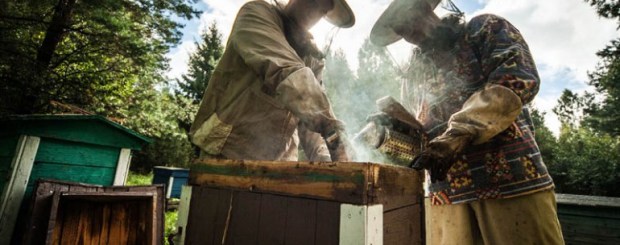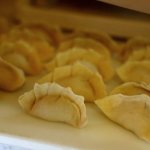EU Certified Polish Regional Products
Comment are off
EU certifications have recently become a much sought-after ennoblement for regional food products, and since Poland’s accession in 2004, several ancestral regional recipes have been invited to join this elite club.
Producers of regional and traditional products can apply for one of the three EU indications: Protected Designation of Origin (PDO), Protected Geographical Indication (PGI) and Traditional Specialities Guaranteed (TSG). Modeled on the traditional French system of appeal, the EU system has been working successfully for two decades. It is aimed at protecting and promoting exceptional food. Poland has already registered 37 regional products, including sausages, cheeses, honey, fruit, alcohol and pastries, most of which are made according to centuries-old recipes.
Sausages and lamb

More than two hundred years ago in Poland sausages were made according to 24 established recipes. These very old custom was reflected in the granting of EU certificates for smoked sausages: sausage lisiecka (PGI), kabanosy (GTS), juniper sausage (GTS) and hunters’ sausage (GTS), as well as lamb from Podhale (PGI).
Lisiecka sausage comes from Liszki, a place located near Kraków (Małopolska); hence the sausage’s name. Preparing meats developed in this district since the mid-nineteenth century and enjoyed a reputation in prewar Poland. This famous meat is produced according to a strict recipe: it consists mainly of ham with garlic, salt and white pepper. It is smoked in smokehouses, which burn the wood of deciduous trees. Another meat product closely associated with Małopolska, or rather with the Tatry region is Podhalanska lamb. The animals come from endemic breeds – the Polish mountain sheep and Podhale sheep. At the time of slaughter they cannot be older than 60 days. Their only food is their mothers’, milk which is high quality due to the traditional grazing of the sheep in the hills and to aromatic mountain herbs.

One of most widely known Polish sausages is kabanos. It is permitted to produce this sausage throughout the EU, but the only country which has got the right to sign it GTS is Poland. Kabanos was very popular before WWII and during the communist era, it was one of the few products that Polandexported. It is worth remembering that an authentic kabanos is made of pork. The thin and dry sausages owe their characteristic taste to the perfect proportions of spices added to it: pepper, cumin and nutmeg.
Another sausage made Poles for centuries is Juniper sausage; its aroma is remindful of the scents of a Polish forest. This smoked sausage owes its name to juniper fruits with which it is flavored. Juniper is well suited to a traditional Polish stew. The last of the ‘EU’ sausages, called hunters’ sausage, in the past was used as a packed lunch for hunters during their break. This dried sausage, spiced with juniper, pepper, fresh garlic and other additives, is durable, juicy and fragile.
Regional Polish cheeses

Among the five Polish traditional cheeses registered in the EU there are three cheeses produced in the southern region of Podhale: sheep cheese, podhalańska sheep cheese and redykołka. All of them have the PDO designation.

Decorated, spindle-shaped smoked sheep’s cheese is a centuries-old tradition in Poland. In its taste you can smell the flavour of mountain meadows and pastures. Maybe that is why it tastes best eaten in a mountain hut, cut into slices or fried on the furnace, with cranberry jam. While writing about oscypek, we must not forget about the other Podhale cheeses produced in the mountains and in huts. For grilling, there is redykołka – a small cheese that can be in shape of an animal, a bird or a spindle. Podhalańska straits, soft sheep’s cheese, is perfect as an additive to bread, dumpling stuffing or salads. The cheeses are made from Polish mountain sheep’s milk.

The picturesque region of Podlasie in eastern Poland is famous for a cheese called koryciński, which has the PGI designation. Korycinski cheeses are maturing cheeses, produced from unpasteurized cow’s milk with the addition of rennet and salt. Spices or herbs can be added. Apparently, the initiators of this tradition were Swiss; they came to Podlasie during the Swedish invasion in the seventeenth century. Wielkopolska fried cheese (PGI) is also a product with a long history, because it was brought to Polish lands by explorers from the area of Netherlands and Germany. The cheese is specific, because prepared than ripened (i.e. mature curd) and after ripening – fried in butter, sometimes with cumin.
Fruits

Within Europe, Poland is a major fruit producer. Six varieties are under the protection of the EU.
The Vistula Cherry (PDO), produced in the so-called Vistula Belt (Subcarpathian) is perfectly suited to the production of juices, jams, homemade wines or liqueurs. People started to grow cherries about 120 years ago, but arboriculture didn’t develop on a larger scale until the interwar period. Malopolska is famous for its suska sechlonska (PGI) and apples łąckie (PGI). The first is a smoked and slightly dried Hungarian plum, which has got a slightly sweet taste with a smoky flavour. Plums are grown in the vicinity of the Sechna village, and they have been cultivated since 200 years ago.

The local people learned to preserve plums in different ways: they dried and smoked it, they used it while producing jam, they also … pickled it, just like cabbage. In Małopolska cuisine, suska is added to stews; it can also serve as a filling for Christmas Eve dumplings. Sechna is situated near the picturesque Kotlica Łącka in Nowosądecczyzna, where on each apple tree exceptionally juicy and firm apples grow, due to microclimate, soil and terrain slope. In the past, these apples were floated down on the Vistula River from Dunajec to Gdańsk and then transported to other countries. Other regions boast exceptional apples and plums too. For example: in Mazovia, in the vicinity of Grojec there is an apple basin; apples which grow there are called grojeckie apples (PGI). In these areas arboriculture began to develop in the sixteenth century. From one of the Polish legends we can find out that Queen Bona herself decided to set up her royal court just nearby Grojec. Kielecczyzna, in turn, has got its own specialty – dried and smoked plums, which are called szydlowskie plums (PGI), because they come from the Szydlow municipality. This method of fruit processing came from the Jewish population.

Poland is the one of the largest producers of strawberries in the world, and “the Queen” of Polish strawberries is the Kashubian strawberry (PGI). Although smaller than other species, due to a microclimate in the Kashubian Lake District it has an intense red color. It also has a unique aroma and taste – in turn, due to sugar content higher than in other strawberries. That is why the Kashubian strawberry is ideal for jams, juices and yogurts.
Sweet and dry pastries
Pierekaczewnik (GTS) is a baked pie. It is a specialty of the Tatar minority living in Podlasie. Polish Tatars are descendants of Muslims and in the seventeenth century they were fighting on the side of the Republic of Poland during the war with the Turks. As a reward for their merits, the King Jan III Sobieski gave them several villages, including the well known Kruszyniany. Their flagship delicacy is known for its size and shape: after baking it weighs about three pounds, and has the shape of a snail shell. Making this pie is laborious. Pierekaczewnik consists of six layers dough, sheeted as thin as possible. On each of them one puts a seasoned stuffing (mutton, beef, goose, turkey meat) or sweet (cottage cheese, raisins, apples, prunes).
In the Lublin region, before World War II, there were mixed influences – Russian, Belarussian and Jewish. In this region you can try the lubelski cebularz (PGI), a delightful treat made with bread and onion-poppy seed filling. Its history dates back to the nineteenth century; it was the Jews who first began to bake it.
Residents of Poznań, in turn can be proud of their own unique delicacy – the St Martin’s croissant(PGI). It is a sweet pastry in the shape of a crescent, sprinkled with chopped nuts, and stuffed with white poppy seeds, sugar, raisins, nuts, fruit in syrup or candied and almond flavouring. These croissants are prepared mainly on the occasion of St. Martin’s Day (11 November).
Kalisz, one of the oldest Polish cities, is famous for its Kalisz wafers (PGI). They are wafer discs, crunchy, lightly sweet and thin as a parchment. Kalisz wafers are baked in this city since the mid-nineteenth century.
Land of honey
Throughout Poland many types of honey are produced, and the tradition of bee-keeping dates back to the Middle Ages. People who live in the south east of Poland make podkarpacki honeydew (PDO). It is made mostly from honeydew (it is derived from silver fir) with the addition of spruce or pine. It has a resinous aroma, similar to the smell of pine needles and a mild, sweet flavour.
The precious treasure of charming Suwalszczyzna is, in turn, honey from Sejneńszczyzna / Łoździejszczyzna (PDO). This honey nectar is made of dozens of different types of plants. It is produced in the basin of the river Niemno, on the border between Poland and Lithuania.
On the Pomeranian Lake District Drawskie, Drahim honeys (PGI) are produced: they are made of buckwheat, rapeseed, heather or lime, and you can also taste there the multifloral honeys. They simply emit the smell of the region of their origin, because they are characterized by the high pollen level coming from endemic aromatic plants.
In Bory Dolnośląskie (that is the part of Nizina Śląsko-Łużycka) heather honey (PGI) is produced, and in Kurpie people make kurpiowski honey (PGI). The latter can be multiflower or nectar, it may also include honeydew. This honey possesses a spicy aroma and a sweet flavour, due to the variety of the vegetation, to the purity of these areas and to the skills of local beekeepers.
King of carps







